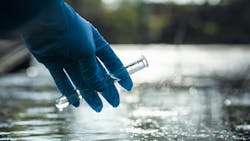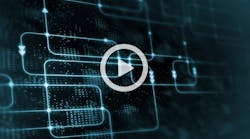During the recent 2024 Olympics in Paris, many had questions about why some events were being delayed due to water quality in the Seine River. Typical questions were: “Why does the water quality change from one day to the next?” “How do you know if the water quality is safe the next day?” From concerns of E. coli concentrations and combined sewer systems (in old cities, such as Paris) to the sampling and laboratory analysis requirements to obtain E. coli results and different human-health standards for E. coli concentrations, there were a plethora of concerns.
These questions may remind many stormwater professionals of conversations they have had with clients when discussing the costs and logistics of stormwater quality monitoring, as it presents challenges that are unique from other water quality monitoring efforts. There are various important issues to consider and discuss prior to implementing a stormwater quality monitoring project.
Weather, staffing and project duration
Weather trends (short and long-term) can greatly affect staffing requirements and the overall project duration.
In the short-term, project staff have to continuously monitor weather forecasts and radars to predict if they need to collect samples and possibly rearrange their schedules to do so. In some regions where large frontal systems are more prevalent, 24- to 72-hour weather forecasts are reasonably “accurate” at least in terms of chances and general magnitude of precipitation. This window can provide some flexibility for staff to reschedule meetings, get sampling equipment prepared, etc. Weather forecasts are much less reliable in areas where weather is affected by topography and other geographic features. In Colorado, for example, summer thunderstorms pop up quickly and unpredictably and can have small footprints due to orographic effects of the Rocky Mountains. Even 24-hour forecasts are not accurate for precipitation location, therefore, staff must remain “on call” and monitor radar in real-time during the summer monsoon season. Given staff vacations and other responsibilities, it is reasonable to have three to four staff members trained and available for sample collection at any time.
Long-term weather conditions may also affect the project duration. The number of data points collected may be an important factor for the project (e.g., comparing two datasets with some level of statistical significance). In some areas of the U.S., obtaining 20 or more stormwater runoff samples per year is a reasonable expectation. In other areas, less than 10 runoff samples should be expected. Some level of analysis should be completed upfront to estimate the project duration. That analysis should include typical rainfall statistics (e.g., number of runoff events per year) and some adjustment for “missed samples” that are likely to occur. It should not be surprising that two to five years of data collection may be necessary to achieve high statistical confidence in results.
Grab, discrete or composite sampling schemes
A critical decision point in designing a stormwater quality monitoring plan is whether samples will be collected and analyzed as grab, discrete or composite. This decision can have a large impact on project costs due to analytical costs, equipment needs and staff training.
Grab samples are collected and analyzed from a single point in time during a runoff event. Discrete samples are collected at multiple times throughout the duration of a runoff event and analyzed individually. Composite samples are also collected at multiple times during a runoff event, however those samples are then combined and analyzed all together. There are pros and cons to each sampling scheme, which are summarized in the table below. Keep in mind that certain sampling schemes may be required to meet regulatory requirements.
If discrete or composite samples are required, automated sampling is generally the best method for collecting those samples. Automated sampling is much more complicated than collecting grab samples. It requires specialized sampling and monitoring equipment, equipment installation from experienced personnel, equipment protection (i.e., vandalism-proof boxes), engineering calculations and programming, among others. Automated sampling also requires high levels of equipment maintenance, especially during early periods of the project when “tuning” the equipment to the site’s rainfall/runoff response.
Laboratory identification and coordination
A stormwater quality monitoring plan may include any number of water quality constituents that require sample collection and analysis. Identifying and coordinating with laboratories is key to a successful project. The analytical capabilities of laboratories vary significantly, so make sure they can provide laboratory results at the minimum detection limits (MDLs) and/or reporting limits (RLs) to meet your project objectives.
Laboratory locations are also critical to consider for constituents that have short hold times. E. coli samples, for example, should ideally be delivered to the laboratory and processed within six hours of sample collection. Orthophosphate is another constituent with a limited hold time of 48 hours. Hold times for other constituents may vary depending on preservation requirements and analytical methods. It is important to discuss with the lab where samples will be delivered versus where they will be analyzed. There is sometimes a trend that laboratories with a nationwide presence will ship certain samples to other laboratories for analysis, even when delivered to the local laboratory. At times, this has resulted in hold time flags and uncertainties in the results. For some projects, it may be necessary to use multiple laboratories based on constituent hold times, MDLs/RLs, and pricing.
Finally, coordinate often with the laboratory on sample bottles, coolers and sample collection. Given the unpredictability of storm events, the project may require keeping several kits of samples bottles/coolers readily available. Sample collection may also be limited by the availability of the laboratory to receive and process those samples. On some projects, you may have had to forgo collecting samples on Fridays and weekends due to receiving and processing limitations.
Summary
The staffing requirements, project durations, costs and laboratory coordination of stormwater quality monitoring projects can be considerably different from other water quality monitoring projects. Discussing these issues upfront should help to set reasonable expectations for all parties involved and ensure a successful project
About the Author
Chris Olson
Senior Water Resources Engineer
Chris Olson, PhD, PE, is senior water resources engineer at Wright Water Engineers, Inc. Olson can be reached at [email protected].


